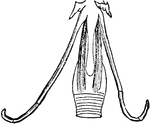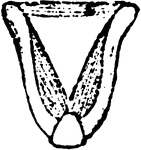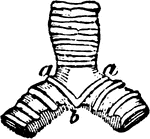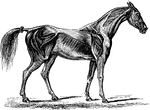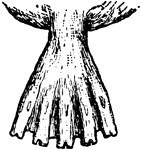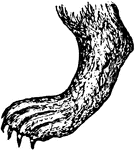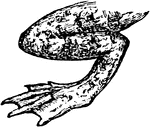
Sandhill Crane Windpipe
"Coiling of the windpipe in the sternum of Grus canadensis. Sandhill Crane." Elliot Coues, 1884

Bustard Gular Pouch
"Gular pouch of bustard; a, tongue; b, the pouch, opening under a, hanging in front of c, the trachea,…
The Respiratory and Vocal Organs of a Rook
"Resipratory and vocal organs of the Rook, Corvus frugilegusm an Oscine Passerine bird; 1 a, tongue;…

Carotid Arteries of Birds
"h, root of aorta; 1, arch of aorta, to the right side; li, left innominate; ri, innominate; ls, left…
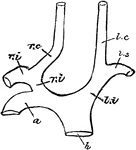
Carotid Arteries of Birds
"h, root of aorta; 1, arch of aorta, to the right side; li, left innominate; ri, innominate; ls, left…
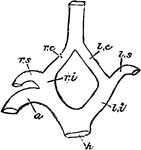
Carotid Arteries of Birds
"h, root of aorta; 1, arch of aorta, to the right side; li, left innominate; ri, innominate; ls, left…
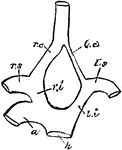
Carotid Arteries of Birds
"h, root of aorta; 1, arch of aorta, to the right side; li, left innominate; ri, innominate; ls, left…

Carotid Arteries of Birds
"h, root of aorta; 1, arch of aorta, to the right side; li, left innominate; ri, innominate; ls, left…

The Hyoid-bone of a Rook
"Hyoid bone; a, glosso-hyal, tipped with cartilage, its posterior horn being certo-hyals proper; b,…

The Glottis of a Rook
"Glottis, or opening of trachea in the mouth; a, base of tongue; b, b, horns of hyoid bone; c, rima…

The Larynx of a Rook
"Larynx viewed from before (below); a, thyroid bone or cartilage." Elliot Coues, 1884

The Larynx of a Rook
"Larynx viewed from behind (above); a, thyroid bone; b, b, its appendages; c, cricoid; d, d, arytenoids;…

The Larynx of a Rook
"Larynx viewed from the right side; a, thyroid; b, appendage; c, cricoid; d, arytenoid; f, f, cartilage…
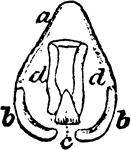
The Larynx of a Rook
"Larynx viewed from behind; a, thyroid; b, b, its appendages; c, cricoid; d, d, arytenoid." Elliot Coues,…

The Larynx Muscles of a Rook
"Muscles of the larynx. thyro-arytenoids, or openers of the glottis" Elliot Coues, 1884
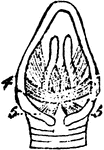
The Larynx Muscles of a Rook
"Muscles of the larynx. Thyro-cricoids, posterior thyro-cricoids." Elliot Coues, 1884
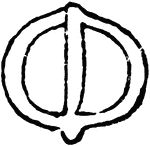
The Trachea of a Rook
"Last entire tracheal ring, viewed from below, crossed by the pessulus." Elliot Coues, 1884
The Trachea of a Rook
"Bifurcation of trachea, and bronchi, viewed from below; a, pessulus, the bolt-bar, or "bone of divarication";…

The Laryngeal Muscles of a Rook
"a, b, c, d, inferior laryngeal or syringeal muscles, not well made out in this figure; But typical…

Male Uro-genital Organ
"Uro-genital organs of male embryo bird; from Owen, after Muller. a, kidneys: b, ureters; c, wolffian…

Female Uro-genital Organ
"Uro-genital organs of female embryo bird; from Owen, after Muller. a, kidneys: b, wolffian bodies;…

Female Uro-genital Organ
"Uro-genital organs of female embryo bird; from Owen, after Muller. a, testis; b, epididymis; c, sperm-duct…
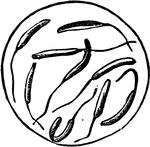
Rooster Seman
"Spermatozoa of domestic cock, greatly magnified." The spermatozoam or seminal animalcules, or male…

Sparrow Seman
"Spermatozoa of domestic cock, greatly magnified." The spermatozoam or seminal animalcules, or male…

Female Fowl Organs
"Female organs of domestic fowl, in activity; from Owen, after Carus. a, b, c, d, mass of ovarian ova,…

Fowl Ovum
"Meroblastic ovum (yelk) of domestic fowl, bat. size, in section; after haeckel. a, the thin yelk-skin,…

Least Auk Adult
"Simorhynchus pusillus. Least Auk. Knob-nosed Auk. Bill small and simple. but stout for its length,…
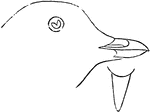
Least Auk Adult
"Simorhynchus pusillus. Least Auk. Knob-nosed Auk. Bill small and simple. but stout for its length,…

Sea Dove Bill
"Alle. Sea Dove. Size small. Bill very short, stout, and obtuse, as well as high at base, the sides…

Black-throated Murrelet
"Synthliborhamphus antiquus. Nipper-nosed Murrelet. Bill somewhat as in Brachyrhamphus, but stouter…

Japanese Murrelet Bill
"Synthliborhamphus umizusume. Japanese Murrelet. Temminck's Auk. Bill more elongate and acute than in…

Pigeon Guillemot Bill
"Uria columba. Pigeon Guillemot. Bill stouter than that of grylle, and more obtuse." Elliot Coues, 1884

Sooty Guillemot Bill
"Bill larger than Pigeon Guillemot, 1.5-1.70 along culmen, along gape 2.20, from feathers on side of…

Common Guillemot Bill
"Bill black; bill along culmen 1.75; gape 2.50; gonys 1.15; depth at base .55; width .30." Elliot Coues,…

Californian Guillemot Bill
"Bill averaging somewhat longer, about 1.90; culmen, commissure, and gonys nearly straight; upper mandible…

Thick-billed Guillemot Bill
"Lomvia arra. Thick-billed Guillemot. Arrie. Bill short, stout, wide, deep; culmen curved throughout;…

Willow Grouse Sternum
""Views of sternum and pectoral arch of the ptarmigan, Lagapus albus, reduced. Lateral view, with the…

Willow Grouse Sternum
"Views of sternum and pectoral arch of the ptarmigan, Lagapus albus, reduced; viewed from below. a,…
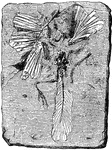
Archaeopteryx Lithographica
"Oldest known ornithological treatise, illustrating also the art of lithography in the Jurassic period,…
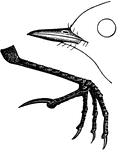
American Titlark Claw
"Anthus Ludovicianus. Louisiana Pipit. American Titlark. Brown Lark. Wagtail. Bill blackish, pale at…

Oriole Bill
"Icterus. Orioles. Bill averaging as long as head (more or less); very acute, sometimes decurved." Elliot…

Pelican Bill
"North American White Pelican. Bill and feet ordinarily yellow; much reddened in the breeding season,…

Diagram of Nerovous and Circulatory System of Sphaerotherium Obtusum Millipede
A circulatory and nervous system of Sphaerotherium obtusum, a South African millipede.
Wing of Bird
"Shows how the bones of the arm (a), forearm (b), and hand (c), are twisted, and form a conical screw."—Pettigrew,…

Anterior Extremity of Elephant
"Shows how the bones of the arm (q), forearm (q'x), and foot (o), are twisted to form an osseous screw."—Pettigrew,…

Heart of a Deer
"Cast or mold of the interior of the left ventricle of the heart of a deer. Shows that the left ventricular…

Compressed Foot
An extreme form of a compressed foot, typically seen in the deer and ox. It is useful for land transit.
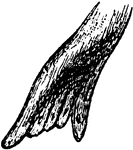
Foot of Seal
"Foot of the seal, which opens and closes in the act of natation, the organ being folded upon itself…
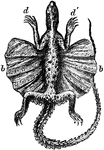
Red-Throated Dragon
"The Red-Throated Dragon shows a large membranous expansion (b b) situated between the anterior (d d)…

Trotting Horse
"Horse in the act of trotting. In this, as in all the other paces, the body of the horse is levered…
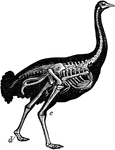
Skeleton of Ostrich
"Shows the powerful legs, small feet, and rudimentary wings of the bird; the obliquity at which the…
